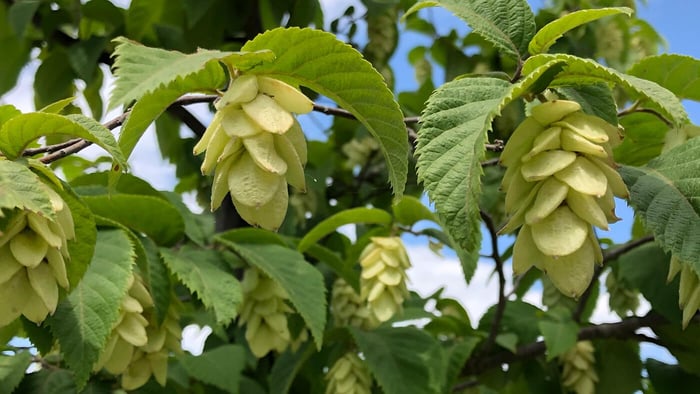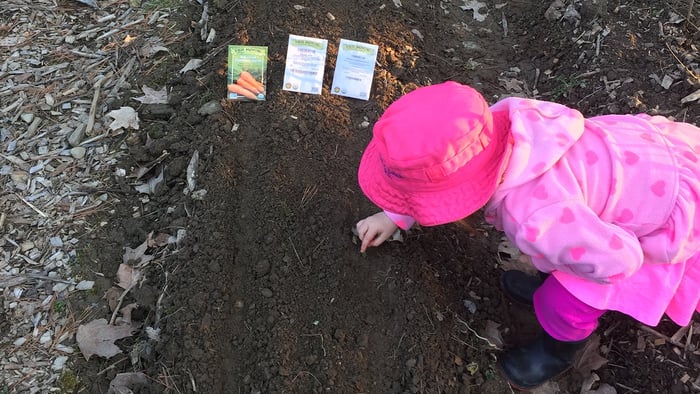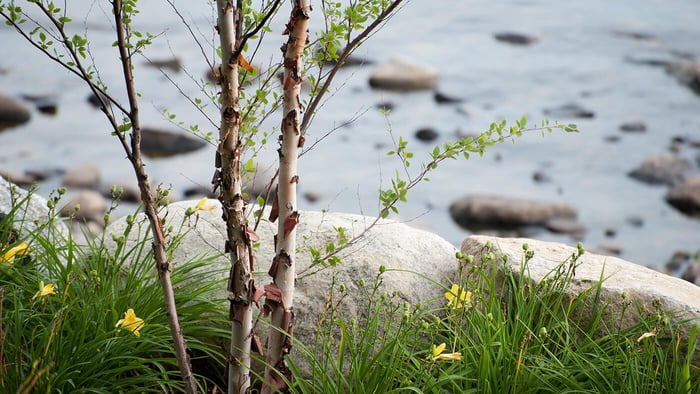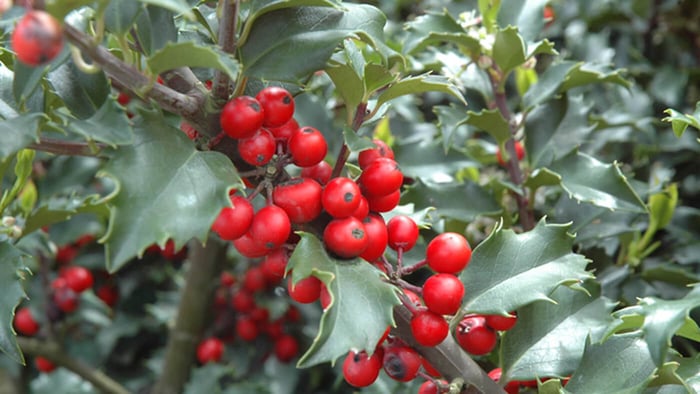
Two Native Trees With Many Nicknames
 Carpinus caroliniana fruits in mid-summer
Carpinus caroliniana fruits in mid-summer
Carpinus caroliniana
Also known as: American Hornbeam, Musclewood, Blue Beech, shares nickname Ironwood
Carpinus is commonly found in wet areas in Vermont's lower elevations. Its smooth bark on trunks and branches resembles muscular skin, hence the nickname musclewood. Male and female catkins appear at the same time in early spring while their fruits arrive in mid-summer. Small nuts are clustered within leafy bracts and are visible. They are technically edible for humans, though squirrels, rabbits, and beavers will likely enjoy and benefit from them much more.
 Ostrya virginiana fruits in mid-summer
Ostrya virginiana fruits in mid-summer
Ostrya virginiana
Also known as: American Hophornbeam, Hophornbeam, shares nickname Ironwood
Ostrya has much more airy branching and is usually seen growing on slopes, versus in lowlands like Carpinus. Its gray-brown bark is very different with textured flaky plates. Male and female catkins appear in very early spring as new leaves emerge. Female catkins develop into fruits with the appearance of hops in mid-summer. Small nuts are enclosed in each papery pocket and are an important food source for ruffed grouse, deer, and rabbits.
 |
 |
| Smooth bark of Carpinus, also known as Musclewood | Textured bark of Ostrya |
In the Landscape
We look forward to both of these trees' unique fruits in the summer. While they are a valuable food source for wildlife, they are also beautiful and ornamental for us humans. Both trees can be planted as specimens or naturalized. Their shorter heights as understory trees add height and nesting diversity to woods habitat.
Ostrya doesn't mind shade and is perfect along a woods edge. It grows as a single-lead tree, reaching around 40' tall. Carpinus reaches between 20-30' tall and can be grown as a single-lead tree, or as multi-stem with lower branching. It is more dense and makes an excellent deciduous screen or hedge. There are also more cultivated varieties with columnar form.
Keep an eye out for these two trees while enjoying Vermont's woods and streams, and consider them when adding to your landscape!
 Specimen Ostrya tree
Specimen Ostrya tree
 Single-lead Carpinus
Single-lead Carpinus
 |
 |
| Multi-stem Carpinus caroliniana | Columnar form Carpinus caroliniana |



